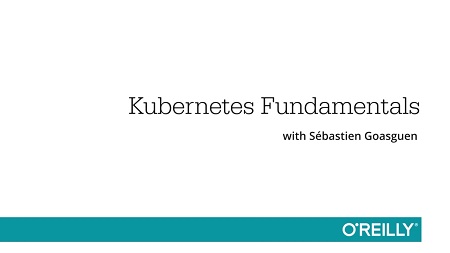
English | MP4 | AVC 1280×720 | AAC 48KHz 2ch | 2h 14m | 703 MB
This is a crash course on Kubernetes, designed for those new to Kubernetes and for those who want to sharpen their skills. It explains and demystifies Kubernetes by showing you the system as a whole before diving deep into the core strength of Kubernetes: its API and how it’s used to operate containerized applications. You’ll learn the main components of Kubernetes, bootstrap a cluster, investigate which components run where, explore the API, use basic curl commands to interact with the system, use the Kubernetes client kubectl, and see a demo of the custom resource definition, the API used to extend Kubernetes. The course caps off with some love for Python developers by introducing the Kubernetes Python client. Basic Linux skills and basic understanding of Cloud computing are required; Docker experience is helpful.
- Get quickly up to speed on Kubernetes, the de-facto standard for container orchestration
- Explore the origins of Kubernetes and its links to other container ecosystem software
- Learn the components that make up a Kubernetes cluster
- Understand the Kubernetes API and the basics of the schemas
- Gain hands-on experience using kubectl to create simple containerized applications
Table of Contents
01 Welcome to the Course
02 About the Author
03 Introduction
04 What is Kubernetes
05 Google’s Borg
06 Containers, Orchestrators and their lineage
07 A tour of useful web resources
08 Introduction
09 A look at the Head Node
10 A look at a Worker Node
11 Introduction
12 Installing kubectl
13 Installing minikube
14 Getting started with minikube
15 A quick tour of minikube key commands
16 Creating a cluster on Google container engine (i.e GKE)
17 Installing kubeadm on your cluster
18 Bootstrapping a cluster with kubeadm
19 Introduction
20 Exploring the kubectl client
21 Using curl to discover the API resources
22 Understanding namespaces
23 Defining quotas
24 Using Labels to select resources
25 Looking at the API schema
26 Introduction
27 A pod, the lowest unit of compute
28 A look at ReplicaSets
29 Building network access with services
30 Scaling your application
31 Putting it all together with Generators
32 Doing rolling updates and rollbacks with deployments
33 Introduction
34 Helm, the kubernetes package manager
35 Extending the Kubernetes API with Custom Resource Definitions (i.e CRD)
36 Having fun with the kubernetes Python client
37 Wrap Up and Thank You
Resolve the captcha to access the links!